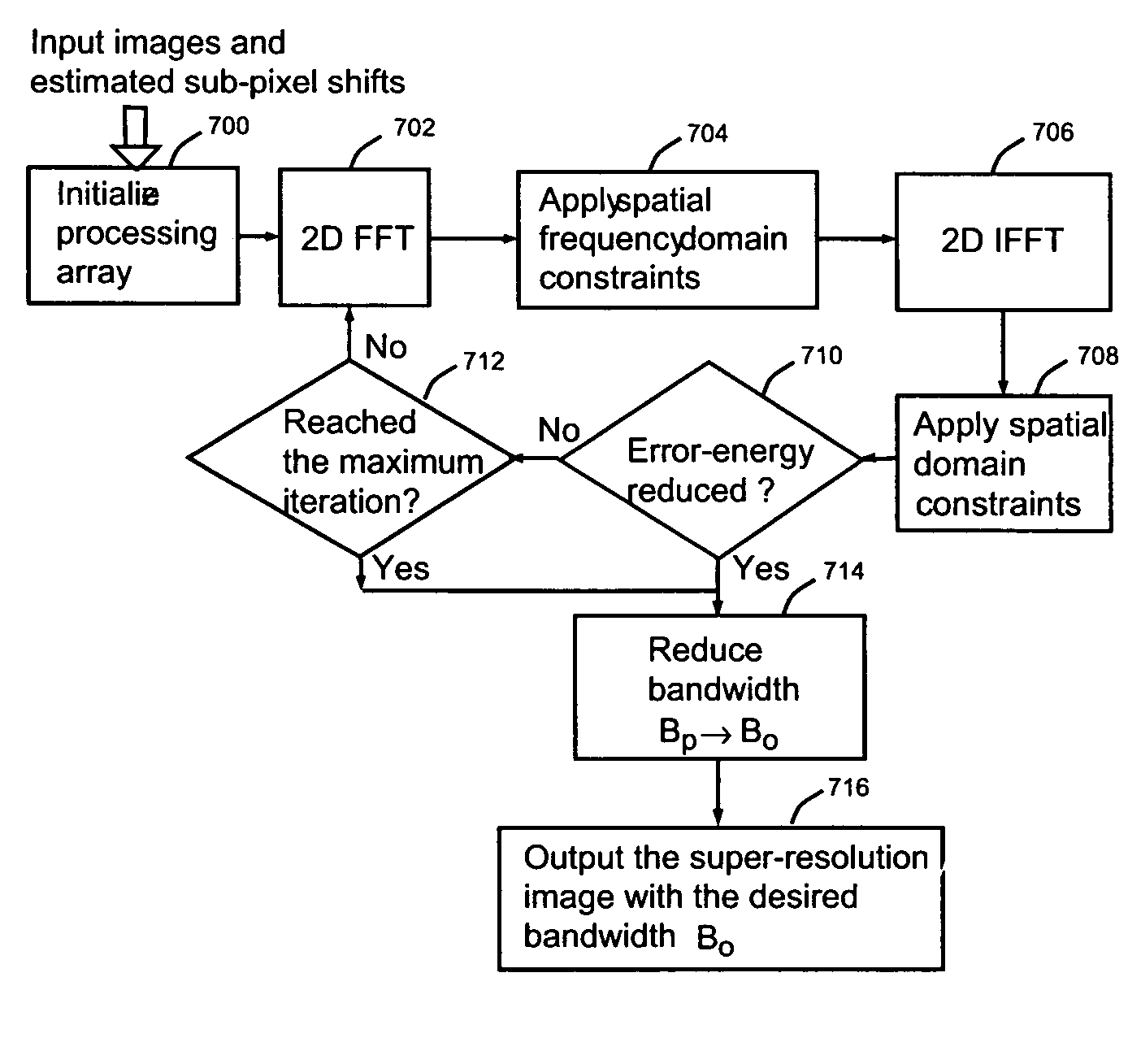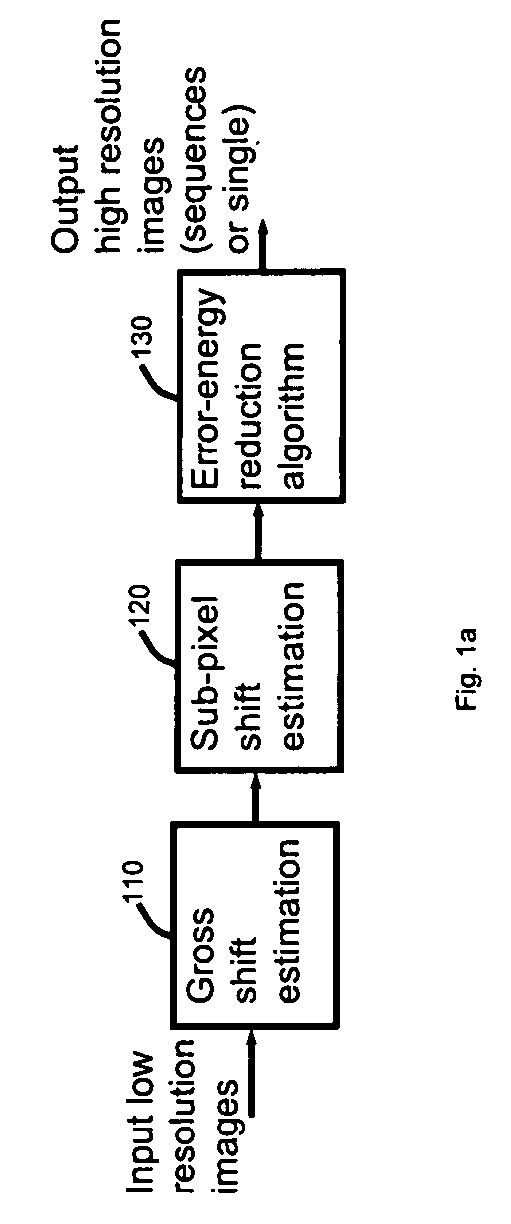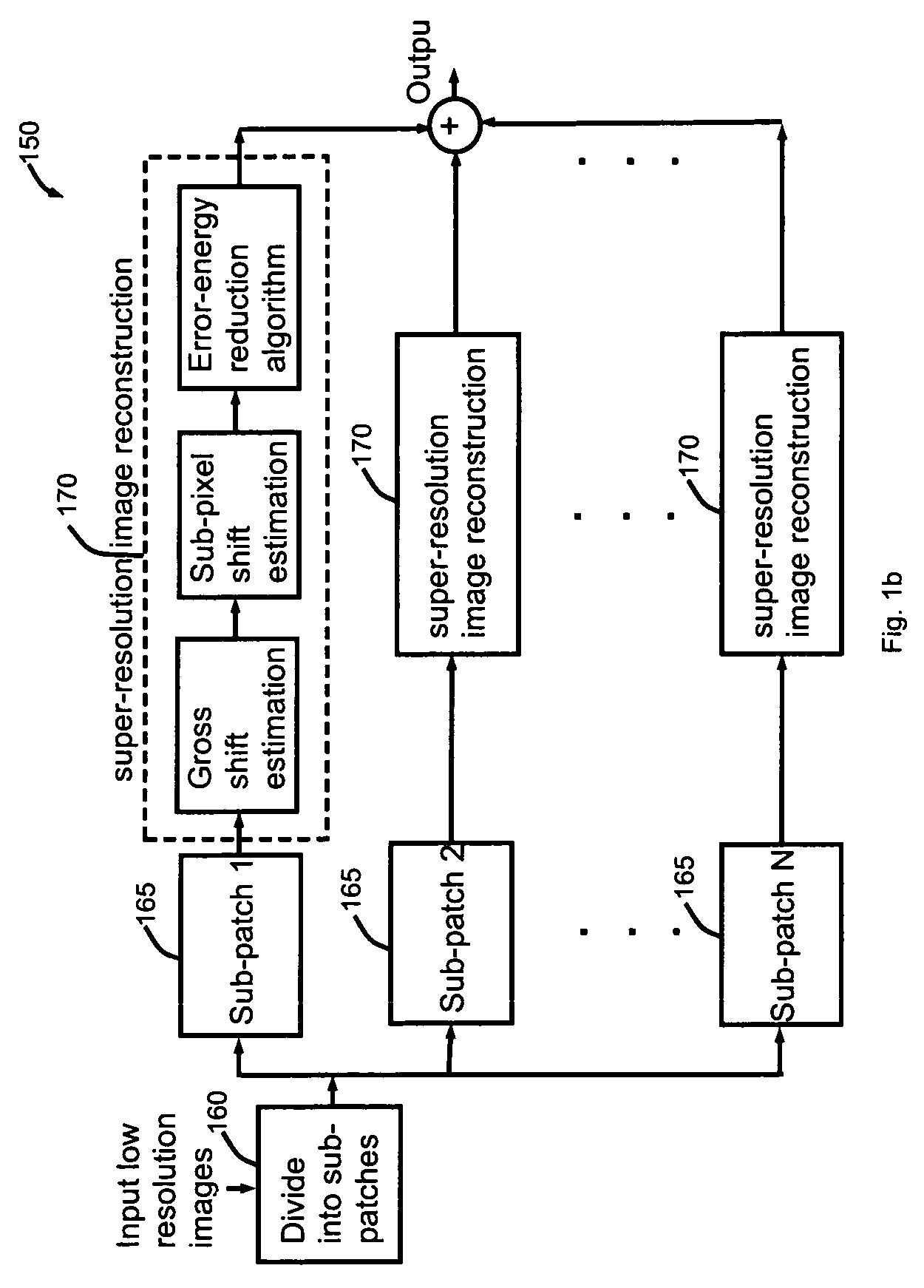Method of super-resolving images
a super-resolution and image technology, applied in the field of digital image processing, can solve the problems of loss of subtle/detail information (high frequency components) in these images
- Summary
- Abstract
- Description
- Claims
- Application Information
AI Technical Summary
Benefits of technology
Problems solved by technology
Method used
Image
Examples
Embodiment Construction
[0040]An overview of the invention is illustrated in FIG. 1a. A sequence of original input low resolution images is passed into the gross shift estimation algorithm (box 110) to estimate the overall shift of each frame with respect to a reference frame. The undersampled low resolution images are captured either by natural jitter or some kind of controlled motion of the camera. The images of successive frames contain not only the sub-pixel shifts but also the integer pixel shifts.
[0041]Before estimating the sub-pixel shifts, the gross shifts among frames are compensated. After the gross-shifts are estimated, the input images are realigned. Then the sub-pixels shifts are estimated for each frame with respect to a reference frame (box 120). The error-energy reduction algorithm is applied to the input low resolution images with the estimated sub-pixel shifts among images to obtain the high-resolution (alias-free) output (box 130). The output is either a single high-resolution image that...
PUM
 Login to View More
Login to View More Abstract
Description
Claims
Application Information
 Login to View More
Login to View More - R&D
- Intellectual Property
- Life Sciences
- Materials
- Tech Scout
- Unparalleled Data Quality
- Higher Quality Content
- 60% Fewer Hallucinations
Browse by: Latest US Patents, China's latest patents, Technical Efficacy Thesaurus, Application Domain, Technology Topic, Popular Technical Reports.
© 2025 PatSnap. All rights reserved.Legal|Privacy policy|Modern Slavery Act Transparency Statement|Sitemap|About US| Contact US: help@patsnap.com



